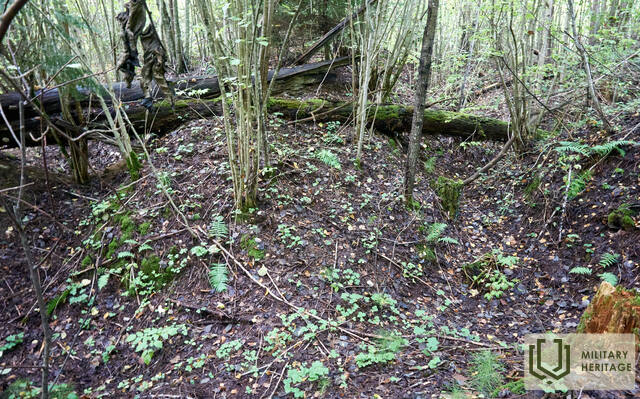On giving place names during wartime
When troops occupied an area, it was not always possible to find out the names of specific houses, hamlets or villages. The local population had been evacuated and there was no one to ask, so the Germans tended to give places their own names. A story about the house in Wilischki has survived. In his memoirs, the commander of the pioneer company, Lieutenant Colonel Koch, who had attended a reserve officer course, writes that one of the artillery units was stationed near the house.
Battery commander Willi did not know the names of the houses, so he named them after himself, adapting them to the local specifics of place names. Since Lithuania is nearby, it is not uncommon for the ending “-ki” to be added to place names (Biruliški, Kamariški, Ragauniški). In this case, the result was Viliški (German – Wilischki). This place name was also included in the division maps and later also in the map Karte des westlichen Russlands (Map of Western Russia, scale 1:100,000) issued by the German military cartographic service. Such a place name is no longer found on later post-war maps. Currently, the location corresponds to the location of the Brāļi house.
Often, places had known names, but they were changed to make them more understandable to foreign powers. For example, the name of the house “Lejas Ķuzāni” was recorded on the map of the Russian Empire as “Лес-тюзанъ”, but on the German-issued map it was already written as Lje Tjusan, and this name was also printed on postcards sent from the Daugava front to Germany.
Another story is with the settlement and hill Zelta kalns. This is currently the name of the village in Medumu parish. During the World War, a hill was named Zelta kalns, which was a strategically advantageous place (key terrain). At that time, the territory could be seen from Zelta kalns from a great distance. Fierce battles took place over the hill and it changed sides several times. In July 1917, one of the so-called death battalions (battalions where officers and soldiers volunteered to join, who insisted on continuing the war with the Germans even after the revolution) was also involved in the attack here. Evidence of these battles can still be found today. On July 7, 2004, during earthworks in Juneļi, Medumu parish, the remains of the dead were discovered. It is possible that it was the former cemetery where the Russian soldiers who fell in the battles of Zelta kalns were buried. The remains of the dead were reburied in the fraternal graves near the settlement Līkais tilts.
This is one example in toponymy when wartime events give rise to a place name that becomes permanent.
Today, the Golden Hill has preserved trenches all around the hill, as well as an approach trench from the German side. The trenches are relatively deep and their broken profile is clearly visible, which was a typical defensive solution and is actually not outdated even today.







